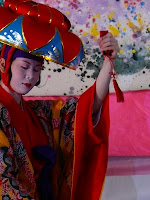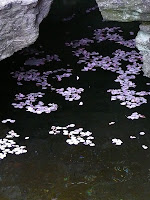Here are technical notes of today:
attack type: ss wrist grab
defense type: projection
technique: step inside, project uke hand / body
uke direction: front / forward roll
entry: hitch step toward uke ctr line (step inside), bend wrist toward you, get off balance. try to keep arm in ctr and in front + bent. defending arm makes drinking beer motion.
description: keep defending hand in front of you, step across uke's center line with lead leg, pivot and face uke's front, bring arm / body down. then uke takes fwd roll
attack type: ss wrist grab
defense type: projection
technique: step inside, project uke hand / body
uke direction: back / forward roll
entry: hitch step toward uke ctr line (step inside), bend wrist toward you, get off balance. try to keep arm in ctr and in front + bent. defending arm makes drinking beer motion.
description: keep defending hand in front of you, but free hand does 3 finger grab of uke's hand (with 3 little fingers caught on thumb side of hand). catch should feel like turning door knob (cause pain in uke.) step across uke's center line with back leg toward uke's rear, project uke's arm + arm / body down. then uke takes fwd roll
attack type: rear one arm mug
defense type: lock
technique: escape to uke's outside + kimura lock
uke direction: front / forward roll...and other possibilities
entry: important to drop weight+catch choke. inside elbow strike.
description: opposite (opp) arm catches attack uke hand / arm + opp leg steps behind you to uke's outside + head ducks under uke's attacking arm. opp arm holds on uke's attack arm. new inside arm can clock uke in head with elbow as it rides over uke shoulder, snake under uke attk side elbow + grab other forearm. shoulders back and down. use turn of hips to project uke forward. or lots of other possibilities.
attack type: round house punch
defense type: throw
technique: ippon seionage save w/ suki nage (sp?)
uke direction: back
entry: like ippon seionage, but it fails. arm of non throwing side checks uke's knee + same side steps around + behind uke. plants foot right behind uke's. straight upright posture, like samurai.
description: after entry, make sure use arm to pin uke's attack arm to shoulder. hold on to attacking uke arm when you wipe off uke and uke falls on matt. knee on head + armbar over thigh
attack type: ippon seionage
defense type: throw / footsweep
technique: kosoto gari?
uke direction: back
entry: tori throw round house punch. uke defends w/ shoulder throw.
description: immediately avoid being thrown by pushing uke's back for off balance. when uke is off balance, kosoto gari.
attack type: round house punch
defense type: lock + take down
technique: a lock with elbow bent w/ close window entry
uke direction: back
entry:uke throws punch, enter like close window (?) but inside arm punches bicep
description: inside arm under uke elbow + catch uke forearm + outside arm on uke wrist/forearm. immediately drop weight, uke takes back fall.
notes: alternatively, outside arm catches uke's face and pulls to you + inside arm holding uke arm w/ lock. inside leg can kick behind uke leg on attacking side to aid take down. this is hard to do when uke is much bigger.
attack type: forward straight punch
defense type: projection
technique: kaiten nage (?)
uke direction: front / forward roll
entry:uke throws punch, hitch step to outside, lead arm parries
description: i think sensei showed a strike w/ forearm instead of shuto. but this strike to neck helps uke to pitch forward + create uke off bl. pivot hips + step thru w/ back leg w/ uke's attacking arm perpendicular to floor and directed diagnolly , across uke's back.


